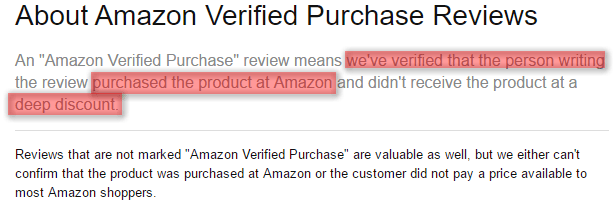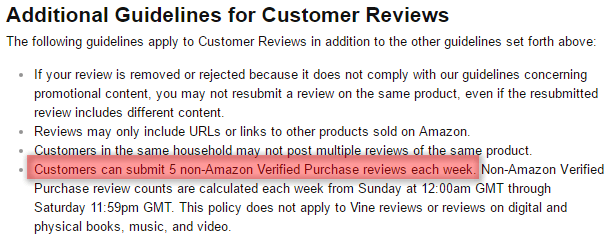Amazon optimization is not about a series of cheap tricks – leave that nonsense to the amateur Sellers.
- Product Search Engines: Amazon vs Google
- A9 – Amazon’s Search Engine
- Amazon Ranking Factors
- Product Reviews
- Amazon Vendor Optimization
- Amazon SEO Tools
Product Search: Amazon vs Google
People think our main competition is Bing or Yahoo.. but really, our biggest search competitor is Amazon.”
— Eric Schmidt, Google CEO, October 2014.
55% of product searches are now started on Amazon”
— Bloomreach Inc., September 2016.
The rise of Vertical Search Engines
We are now witnessing sizable developments in what is essentially the fragmentation of Search.
Slowly but surely, Google is losing its grip on very large chunks of search traffic that previously it would have completely controlled. Those conducting a search for information now instinctively know that there are simply better, more accurate and more focused alternatives available than a straight-forward Google search.
If you’re wondering what the best hotel is, or where’s the best place to eat.. there’s a strong chance that you’re thinking of conducting that search on TripAdvisor or Yelp, not Google.
The same is now true of product searches – and Amazon is now the preeminent product search engine – with Bloomreach reporting that 55% of product searches now originate on Amazon.
A9 – Amazon’s Search Engine
Amazon’s ranking algorithm is formulated and implemented by its subsidiary A9.

Scope & Search Intent
One of the most pleasant aspects of dealing with Amazon SEO is that its scope is limited to product search. The A9 implementation does not need to concern itself with blogs, videos, social media etc – its sole focus is on product listings.
Similarly, unlike the algorithm affecting Google SEO, the A9 team do not have the issue of determining “search intent” – the intent on Amazon is clear, we’re here to purchase products.
A9 – external considerations (off-Amazon)
Practitioners of Search Engine Optimization outside of Amazon are well versed in what are termed “off-page factors”.
This is the combination of all the ranking signals that exists outside of your web property (that you’re trying to have ranked) that contribute to its eventual position in the search engine results page. In the world of Google this often translates into backlinks, citations etc.
However building external links to Amazon product listing pages is not going to have any effect on that product listing’s rank in the Amazon SERPs. Likewise, Amazon does not care about duplicate content and whether you might have simply lifted copy from your own website (however, always bear in that Google does care).
Therefore it’s tempting to think that there are zero external considerations when it comes to Amazon optimization – yet this is not entirely true.
Price Comparison
One of the key success metrics that the A9 algorithm tracks is the number of perfect orders – i.e. orders with zero complications for either Amazon or the Buyer. Even something as simple as an email from the buyer converts the order status to that of an imperfect order.
One poorly-understand reason that an order can be refunded (especially through an A-Z claim) is when the Buyer claims that the same product was available for a cheaper price elsewhere (for example via a promotion on your, the manufacturer’s, website). If this happens, then price external considerations just had a direct effect on that product’s search rank as your metrics just took a hit.
Additionally, Amazon itself continuously scans the internet gathering competing price data, the effects of which started to show up when it quietly began eliminating list prices in 2016.
If a brand attempts to maintain a premium on its Amazon pricing relative to the manufacturer’s own website price – Amazon is going to be aware of this and will likely factor this in when determining organic visibility in the search results.
Brand Signals
Finally – while not truly an off-Amazon consideration – ensure that you’re brand has been enrolled in the Amazon Brand Registry.
A9 – success metrics
Once we realize that search intent is crystal clear – it should be apparent that A9 will be have a vastly different definition of what constitutes success metrics than Google.
On Google a sky-high click-thru rate (CTR) with a moderate amount of dwell time (time spent perusing a listing) and modest conversions is a relatively decent success. Whereas Amazon could interpret that scenario as utterly wasted search traffic – especially for high volume competitive terms.
“Success” for Amazon is beautifully simple: was the result a trouble-free profitable sale?
Amazon Ranking Factors
Once again we must stress that optimization on Amazon is about having all aspects of your brand working in harmony – achieving a product & brand synergy that significantly boosts sales.
Search keywords – conversions
The primary driver of traffic on Amazon is search keywords – this is different from Google optimization where buyer intent plays a much higher role.
The successful marriage of a search keyword with a successful trouble-free sale (a ‘perfect order’ in Amazon parlance) is exactly what Amazon is after. When you achieve this at scale, satisfying keyword queries via both organic search result and paid advertising, Amazon takes notice and further rewards you.
Research of actual buyer search terms and conversions plays a central role in any optimization campaign.
Conversion rates
At all times you must remember that a huge percentage of buyers on Amazon are at the late stage of the buying cycle. Therefore your on-page conversion rates are a crucial indicator that the buyer believes that “yes, this is the product”.
Conversion optimization is paramount and is difficult to achieve without A+ content – as its absence drastically reduces the number of opportunities we have to reduce buyer fear, uncertainty & doubt.
Product Reviews
Reviews are paramount in terms of Amazon ranking, however it is has never been more important that they be authentic and honest.
See the dedicated section on amazon reviews below.
Product Images
It’s no secret (or at least, it shouldn’t be) that Amazon’s A9 search algorithm gives added weight to product listings that contain hi-resolution product images. The more the better.
Product Copy – keywords
Strategic (but not spammy) placement of your researched target keywords (pulled from your AMS advertising data) throughout titles, product descriptions, bullet points and the advanced text modules only available via A+ content ensure that you’re sending all the correct search signals to Amazon.
Optimization of your back-end search terms in Vendor Central completes this process.
Overall transaction & experience
Remember that Amazon controls this entire ecosystem – and it has data points on literally every single action that occurs over the lifetime of a successful transaction.
What’s the conversion rate for this item? What’s the return rate? What’s the re-order rate? How positive are the reviews? Optimized products have favorable scores on all of these metrics.
Amazon Product Reviews
Product reviews are a critical component of Amazon SEO – and they are at a fascinating juncture right now.
- Overview
- Amazon verified reviews
- Reviews – ranking & conversion effects
- Amazon early reviewer program
- Automated review solicitation
- Reviews – additional restrictions
Overview
The last year has seen lawsuits versus those selling reviews, the complete devaluation in the A9 optimization algorithm of the “review club” reviews culminating in the outright banning of incentivized reviews.
The 1099 tax implications recently foisted on reviewers taking part in the Amazon Vine program for Vendors has merely added to the intrigue.
Amazon Verified Reviews
In terms of optimization on Amazon, verified reviews are the only review type to be allocated a significant ranking weight in the A9 algorithm.
However this is also true of conversion optimization on Amazon simply due to the fact that consumer confidence levels in non-verified reviews hit an all-time low in 2016. This is a reminder that brands should never try to optimize product listings purely for machine algorithms – because at the end of the day it is still a human shopper who makes the decision to purchase.
So what are verified reviews? Quite simply they’re the reviews that Amazon trusts because it has determined that (a) the buyer leaving the review genuinely purchased the product on Amazon and (b) they did so without availing of a large discount (i.e. an incentivized purchase).

This disqualifying nature of large discounts should also be factored in if you are considering running lightning deals, as any genuine reviews garnered during that process may still not be viewed as ‘verified’ due the fact that a large discount was applied.
Reviews – Ranking & conversion effects
In terms of ranking (optimization), product reviews are of enormous importance on the Amazon platform.
However, their contribution to product conversion optimization is even greater, and as we’ll discuss below, there is a direct relationship between a product’s conversion rate and that same product’s visibility in the amazon search results.
Since directly incentivizing customers to leave (even unbiased) reviews is now proscribed, there remain three options for gathering reviews without leaving the Amazon ecosystem: Amazon Vine, Amazon’s (beta) early reviewer program and automatically soliciting previous buyers via automated follow-up email sequences which request a review.
Amazon Early Reviewer Program
In what was no doubt the most interesting development since incentivized reviews were banned – Amazon launched a (beta) program where purchasers will be encouraged (some might say, incentivized.. ) to leave a review for a product they have already purchased – in exchange for an Amazon gift card.

While the program is currently only in beta to select 3P Sellers, it can be summarized as:
- Sellers will have a mechanism to nominate certain SKUs in their catalog as requiring reviews
- This ‘flag’ will not be publicly visible to Buyers
- Randomly, Amazon will email a number of purchasers of the products that have been nominated, and ask the Buyer to leave a review.
- To sweeten the deal, Amazon will offer the Buyer an Amazon gift card of low value ($1 – $3) as an incentive to leave a review.
- Similar to how Amazon identifies Amazon Vine reviews, an “Early Reviewer Rewards” badge will be placed next to such reviews.
Automated Review Solicitation
While no one can be sure for how much longer this practice will be sanctioned by Amazon, it remains the number one method for obtaining the gold standard of reviews on Amazon: verified reviews.
Tools such as feedbackfive allow third-party sell ers to create and automate a follow-up email sequence designed to solicit reviews from customers who have previously purchased.
Reviews – additional restrictions
2016 was officially the year when Amazon started gating the reviews ecosystem and several additional restrictions have been introduced.
Minimum Amazon Spend
Other than the use of incentivized reviews, the most common attempt to game the reviews system was via the practice of leaving reviews via fake amazon accounts.
In order to combat this, amazon accounts must now have a purchase history of at least $50 and the purchases must have been made via a valid credit/debit card – not via gift cards etc.

Up to 5 non-verified-reviews per week
In a deliberate attempt to curtail those operating as ‘professional reviewers’, buyers will only be able to submit a maximum of five reviews which are not deemed to have been verified reviews.

Note that the volume restrictions do not apply to reviewers participating in the Amazon vine program.
Amazon Vendor Optimization
Vendors have both advantages and limitations that must be taken into consideration when planning an optimization strategy.
Vendor Optimization: Positive feedback loop
Amazon optimization is about the creation of a positive feedback loop:
- Actual customer search data is pulled from your Amazon Marketing Services (AMS) Campaigns
- This data feeds the optimization of your A+ content enhanced product listings & back-end search terms
- A+ video & advanced text modules address your buyer’s fear, uncertainty & doubt (FUD) – improving conversions.
- Honest reviews from Amazon’s top reviewers further solidify trust levels
To really turbocharge your efforts, a Vendor subscription to Amazon’s retail analytics premium service provides an unparalleled source of actual search queries in your product category.
Amazon SEO Tools
- Our Amazon SEO software platform – complete optimization for Vendors & large 3P Sellers
Keyword research tools
Often, before you can start examining how well a product listing is performing for a set of search terms.. you’ll first need to research those keywords.
- Adwords keyword research tool
- Scientific Seller keyword research tool – which includes some excellent functionality especially when it comes to keywords for Amazon’s international marketplaces.
- MerchantWords – notably makes estimates for actual search volume of keywords, not just the search terms themselves.
Like to know more?
To talk about your brand’s existing (or potential) approach to Amazon SEO / Optimization, simply get in touch below.